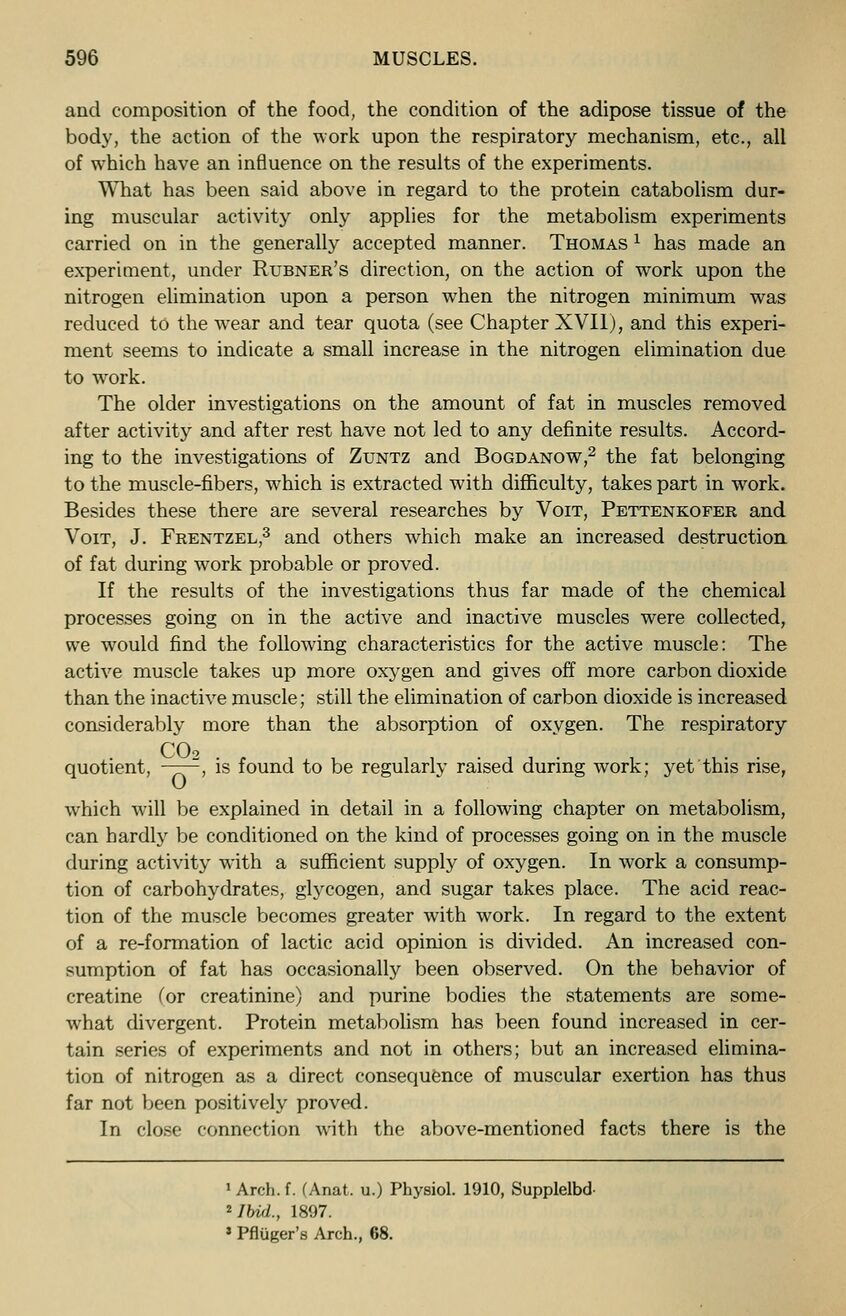
Full resolution (JPEG) - On this page / på denna sida - X. The Muscles - Extractive Bodies of the Muscles

<< prev. page << föreg. sida << >> nästa sida >> next page >>
Below is the raw OCR text
from the above scanned image.
Do you see an error? Proofread the page now!
Här nedan syns maskintolkade texten från faksimilbilden ovan.
Ser du något fel? Korrekturläs sidan nu!
This page has never been proofread. / Denna sida har aldrig korrekturlästs.
596 MUSCLES.
and composition of the food, the condition of the adipose tissue of the
body, the action of the work upon the respiratory mechanism, etc., all
of which have an influence on the results of the experiments.
What has been said above in regard to the protein catabolism dur-
ing muscular activity only applies for the metabolism experiments
carried on in the generally accepted manner. Thomas 1
has made an
experiment, under Rubner’s direction, on the action of work upon the
nitrogen elimination upon a person when the nitrogen minimum was
reduced to the wr
ear and tear quota (see Chapter XVII), and this experi-
ment seems to indicate a small increase in the nitrogen elimination due
to work.
The older investigations on the amount of fat in muscles removed
after activity and after rest have not led to any definite results. Accord-
ing to the investigations of Zuntz and Bogdanow,2
the fat belonging
to the muscle-fibers, which is extracted with difficulty, takes part in work.
Besides these there are several researches by Voit, Pettenkofer and
Voit, J. Frentzel,3
and others which make an increased destruction
of fat during work probable or proved.
If the results of the investigations thus far made of the chemical
processes going on in the active and inactive muscles were collected,
we would find the following characteristics for the active muscle: The
active muscle takes up more oxygen and gives off more carbon dioxide
than the inactive muscle; still the elimination of carbon dioxide is increased
considerably more than the absorption of oxygen. The respiratory
COo
quotient, ~pr~, is found to be regularly raised during work; yet this rise,
which will be explained in detail in a following chapter on metabolism,
can hardly be conditioned on the kind of processes going on in the muscle
during activity with a sufficient supply of oxygen. In work a consump-
tion of carbohydrates, glycogen, and sugar takes place. The acid reac-
tion of the muscle becomes greater with work. In regard to the extent
of a re-formation of lactic acid opinion is divided. An increased con-
sumption of fat has occasionally been observed. On the behavior of
creatine Cor creatinine) and purine bodies the statements are some-
what divergent. Protein metabolism has been found increased in cer-
tain series of experiments and not in others; but an increased elimina-
tion of nitrogen as a direct consequence of muscular exertion has thus
far not been positively proved.
In close connection with the above-mentioned facts there is the
1
Arch. f. (Anat. u.) Physiol. 1910, Supplelbd-
*Ibid., 1897.
• Pfliiger’s Arch., 68.
<< prev. page << föreg. sida << >> nästa sida >> next page >>